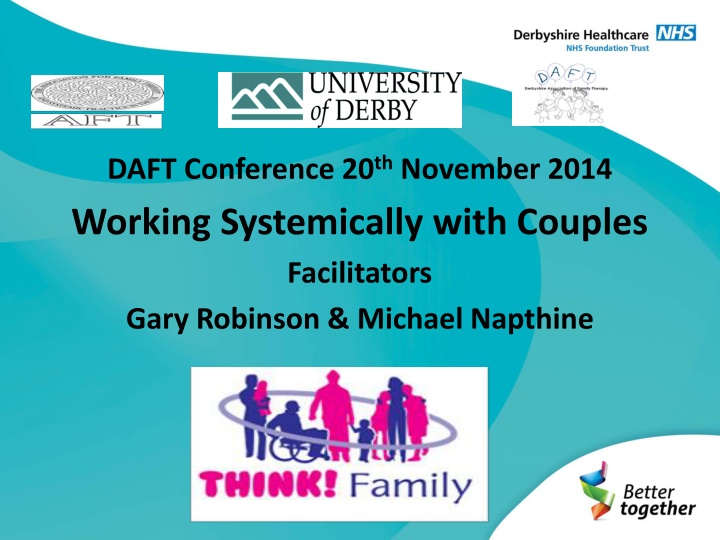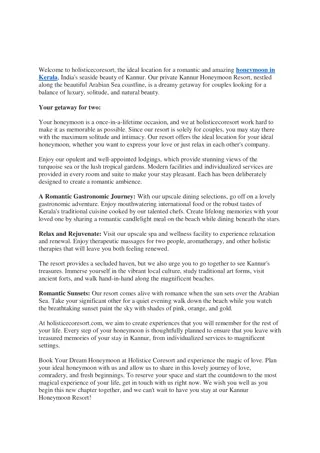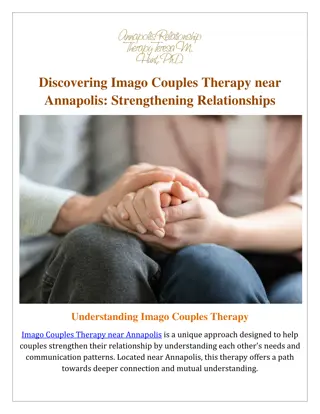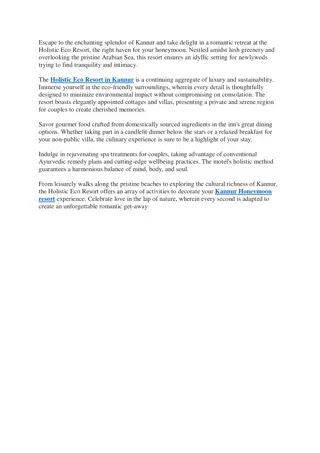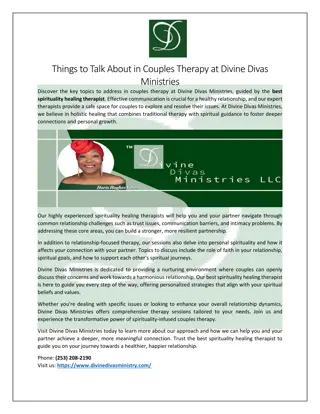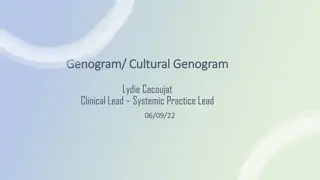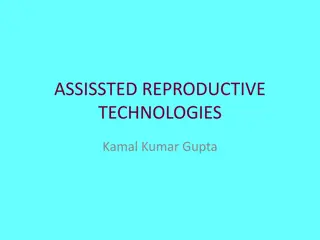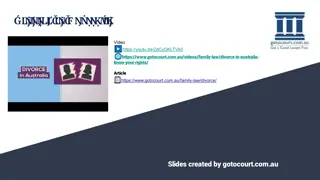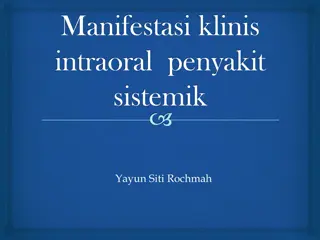Working Systemically with Couples
"Explore the dynamics of systemic work with couples through practical examples and discussions at the DAFT Conference on 20th November 2014. Join facilitators Gary Robinson and Michael Napthine to delve into effective strategies and approaches. Engage in sessions covering Exeter Depression Model, transferable skills, and more. Share experiences, learn from experts, and foster creativity in promoting systemic couples work. An insightful and engaging event to enhance your understanding of working with couples."
Download Presentation

Please find below an Image/Link to download the presentation.
The content on the website is provided AS IS for your information and personal use only. It may not be sold, licensed, or shared on other websites without obtaining consent from the author.If you encounter any issues during the download, it is possible that the publisher has removed the file from their server.
You are allowed to download the files provided on this website for personal or commercial use, subject to the condition that they are used lawfully. All files are the property of their respective owners.
The content on the website is provided AS IS for your information and personal use only. It may not be sold, licensed, or shared on other websites without obtaining consent from the author.
E N D
Presentation Transcript
DAFT Conference 20thNovember 2014 Working Systemically with Couples Facilitators Gary Robinson & Michael Napthine
Theres a lot going on! http://www.aft.org.uk
There is a lot more going on! http://derbyshireaft.wordpress.com/ http://www.aft.org.uk/view/index.html?tzcheck=1 http://www.derby.ac.uk/search/?q=systemic%20courses
How we start influences where we end up To participate with neutrality, curiosity and respect: This topic can evoke powerful feelings To respect confidentiality To look after yourself and others Regard all questions as useful Share experience and expertise Switch off mobile phones Move about as you wish Be positive and constructively critical Remember everything and nothing is original
Plans 09.30 Welcome 10.00 Introductions & Aims & Exeter Depression Model 10.45 Tea 11.15 Jake and Amy: Skills and Questions 12.30 Lunch 13.15 Couples Projects: Adult Mental Health 14.30 Tea 14.50 Couples Projects: Child & Young Person Mental Health 16.00 Discussion and Feedback 16.30 Home
Aims Introduction to the Exeter Depression Model Introducing the DHCFT Couples Project Transferable Skills for Couples Work Learn with and from each other Generate curiosity and creativity Promote Systemic Couples work
Smart things women say and other stories As a housewife and mother, I feel that if the kids are still alive when my husband gets home, then, hey, I ve done my job. Roseanne Barr I can t mate in captivity. Gloria Steinem on why she never married.
Leona Lewis Bleeding Love
Exercise: In Pairs 10 minutes Introductions to each other Hopes about the Day What expertise might you like to share about couples
Context: Why Care Quality Commission Commissioning Frameworks Health and Social Care Bill 2012 Recommendations from Reviews (2003 2012) Early Intervention: IAPT & CYPIAPT National Service Framework (June 2012) National Psychosis Summit (April 2014) Children and Young People Plan Hackney Model & Munro Report NICE Guidelines Serious Case Reviews and Enquiries Troubled and Think Family Agendas
Systemic Couple Work: Focus Upon Strengths, Abilities and Possibilities Power and Anti-Discrimination People in Context: Systems and Networks Self of the Practitioner Creativity, Inclusivity and Multiplicity Neutrality, Curiosity and Respect Present, Past and Future Actions, Thoughts and Feelings
Systemic-Behavioural Systemic-Empathic: The Exeter Model Couples Work with Depression Janet Reibstein & Hannah Sherbersky Systemic Empathic Reframing Genograms Interviewing internalised other Circular questioning Sculpts Empathic bridging manoeuvres Investigating family scripts Investigating attachments Systemic Behavioural Circularities Enactments Role play Communication training Problem solving Homework tasks Behavioural exchange
DHCFT Couples Project Substance Misuse Couples Project led by Doro CAMHS Couples Project led by Veronica Inpatient Couples Project led by Michael Safeguarding Couples Project led by Gary & Karen
Supervision Consultation Training Research & Audit Pilot Projects DAFT & AFT Systemic Hub & Spokes University Training Programmes Practice: Experts by Experience
Anti-Discriminatory Practice Sexual Orientation Occupation Class Interests Abilities John Burnham Literacy Gender Race. Religion Age. Attributes. Appearance Class. Colour Ethnicity. Economic Status. Education Sexuality. Size: Spirituality
Hypothesising & Curiosity Possibilities, Ideas & Informed Guesses. Tentative explorations, allowing for the consideration of new meanings & possibilities
Circularities Tracking : Talk with the couple about their actions and interactions, for example by: Reflecting back observations about recurring patterns of relating between the partners Ask about the possible functions of symptomatic behaviours for each Be curious about the roles played by each partner and others in creating and maintaining problem behaviours or symptoms, and explore possible reasons for these Discuss interactive patterns that may maintain symptoms or negative interactions. Explore thoughts and feelings relating to actions
Self Reflexivity The only person you can change is yourself. However the changes you make will influence others and you cannot know what that influence or effect will be. All of which is influenced by context. Informationally closed systems: Maturanna
Love is all around us: Use of self Meatloaf & Sam Smith
Circularity Gary acts Jan acts
Circularity, Meaning and Action Gary thinks Jan acts Gary acts Jan thinks
Context, History, Gender and Culture Past experiences Gary thinks/feels Jan acts Gary acts Jan thinks/feels Past experiences
Skills Practice In Pairs: 10 minutes each and then swap Discuss and Draw circularities in relation to a recent couple issue or disagreement. Track behaviours, feelings and thoughts. Do not try to problem solve or give opinions.
Hypothesising (Consider, reflect, discuss ideas) Circularity (Notice new information) Neutrality (Open and curious To new information) Strategise (Consider and choose) Tomm, Karl. (1987). Interventive Interviewing Part I: Strategising as a Fourth Guideline for the Therapist. Family Process 26. (page 12)
Interventive Interviewing Karl Tomm He highlighted the fact that every question is a mini- intervention, and he refers to circular questioning guided by specific strategies as interventive interviewing . Strategising is the process that guides such interviewing. When strategising, therapists, according to Tomm, clarify their intentions about why they are asking particular questions. Carr, Alan. (2006). Family Therapy: concepts, process and practice. 2nd Ed. John Wiley and Sons Ltd, Chichester. pp128
Lineal tracking questions: What happened? Who was involved? What did they do? How did you do? When was that? Tomm, Karl. (1988). Interventive Interviewing Part III: Intending to ask Lineal, Circular, Strategic, or Reflexive Questions? Family Process 27:1-15
Circular tracking questions: When you did that how did your friend react? How did people react when the fire started? Who else may have been affected by the death? Tomm, Karl. (1988). Interventive Interviewing Part III: Intending to ask Lineal, Circular, Strategic, or Reflexive Questions? Family Process 27:1-15
ReflexiveQuestions The questions are reflexive in that they are formulated to trigger family members to reflect upon the implications of their current perceptions and actions and consider new options (Tomm, 1987.)
Circular Questioning Using different types of questions to encourage new perspectives. Types of circular questions Scaling questions Future orientated questions Ranking questions New alternative questions Triadic questions Outsider observer questions Self-reflective on self questions Same question asked of all Contrast questions
Genograms Family genograms identify cross-generational family meanings, norms, and/or expectations, especially with regard to relationship roles and scripts Genograms offer tangible and graphic representations of complex family patterns (McGoldrick, 1999) The genogram is both an end product and a therapeutic process, moving focus away from the identified patient 31
2. Move to what is in the past; the history that may be impacting upon the present and potential future. B Past 1. Start with here and now. Who is important in the child s life, what are the current presenting difficulties. How do family members understand this and who might be involved in the assessment, treatment and support? A Present Resisting premature knowing, or offering solutions. Inviting families to consider the influences of the past before moving to the future 3. Agree what the aims or goals are for the future and how the family will be supported in achieving them, over what period. C Future
Tracking Actions, Feelings & Thoughts in the Present, Past and Future Use the grid to consider questions you might ask whilst watching the couples work with Jake and Amy. Share your ideas with your partner
Key Ideas & Concepts For Today Engagement & Feedback Curiosity & Neutrality Contexts & Systems Circular & Reflexive Questions Use of Self Tracking Circularities: Thought Actions Feelings Tracking Circularities: Present-Past-Future Relational Empathy 2nd Order Change = Behaviour + Meaning
Couples therapy in an NHS adult mental health service Michael Napthine
Couple Therapy in Adult Mental Health EARLY INTERVENTION TEAMS ACUTE ADULT CARE CRISIS & INPATIENT SERVICES LESBIAN GAY BISEXUAL AND TRANSGENDER DROP IN Practice, Consultation and Supervision
Acute care Crisis Team Day Hospital Radbourne In Patient unit
Map of adult care Primary care Crisis team Inpatient and day hospital areas Specialist teams E.I. AOT Recovery teams
The H family 29 30 Steve Sonia 3 7 5
Tracking 1 Sonia Steve Sonia F. Stressed and overwhelmed F. Worried there will be an argument F. Angry T. Why doesn t he want to help me? T. He might help me out T. You ve got enough/why do you need more money A. Questions Steve and asks again. Raises voice A. Asks Steve for money A. Says no
Tracking 2 Sonia Steve Steve F. Angry F. Angry and suspicious F. Fed up T. Don t get treated as a wife/he should help me T. I don t want to be in trouble with the police/she will call the police T. We need the money to save for a house/is she planning to leave? A. Tells Steve to leave the house or she will call the police as they are shouting and arguing A. Starts to leave A. Raises his voice
Tracking 3 Sonia Sonia Steve F. Low and depressed F. Scared he will go F. Fed up T. Me and the children would miss him T. I need to go but this is my family T. I ve got to make it better/I want to make the marriage work A. Stays after persuasion A. Pleads with him not to go A. Becomes quiet
Ideas that were useful in the work Active listening Encouraging positives Using I statements Problem solving Negotiating Skills Emotional regulation
Active listening Encourage partners to listen actively in a manner that supports and validates the speaker. Clarify but don t debate or interpret what has been said. Summarise and reflect back what you have heard your partner say especially regarding key issues. Don t make unfounded assumptions about what you re partner has said. Exeter Model Handbook
Active listening exercise Using the guidelines for active listening in pairs choose any topic relating to working with or being a couple to talk about. (This does not have to be a problem!) This can be anything from something that has happened or interested you recently or how you feel or think about an idea presented today. Please only share what you are comfortable with.
Problem solving Defining problems Brainstorming positive alternatives Evaluating the pros and cons of these Identifying the components of a contract Forming a contract Maintaining a dialogue around more difficult problems without an apparent solution Exeter Model Handbook
PROBLEM SOLVING EXERCISE In pairs use the problem solving guidelines to discuss a current or previous couple difficulty personally or professionally. Again please only share what you are comfortable with.
Couples Work and Substance Misuse The service aims to address heroin addiction use of crack/cocaine, amphetamines, cannabis or more recently legal highs. Clients with a long history of drug addiction often face a multitude of problems such as physical and mental health issues, debts, involvement in crime or Social Care issues. Substance Misuse Workers address practical matters, prescription issues, harm reduction advice and managing risk. Working systemically helps to focus on clients social networks and important relationships rather than only concentrating on their substance misuse issue. The relationship becomes the focus with all its complexity of communication, behavioural or emotional issues. Elements of the Exeter Model are particularly helpful. Tracking circularities is a very visual tool for highlighting familiar patterns in relationships. It also allows the detailed exploration of each person s feelings, thoughts and behaviour in a particular situation. This exploration then provides the opportunity to use other elements such as eliciting vulnerability , empathic questioning or validation. Despite Recovery being the foundation of the most recent Drug Strategy this has not led to a more systemic approach within our organisation. It can difficult and time consuming to encourage referrals and engagement. Poor or irregular attendance can be an issue for this group due to their complex needs and substance misuse
Couples Work and Substance Misuse T is 34 years old and has been in treatment for 8 years. He had been very stable and was in the process of reducing his methadone. He relapsed to daily heroin use about 2 years ago, when experiencing severe depression and anxiety. His girlfriend N. asked to attend meetings with him to help support him and also to help her regain trust as he had lied to her many times. A difficulty in working with them was that N. focused on T being the problem as he had relapsed to heroin use. She wanted to support him and also thought that he needed to sort his drug problem out. Tracking the circularities put the focus on the interaction between them and helped them both understand the others behaviours better and they gained insight into each other s feelings. This enabled them to be more understanding of each other.
